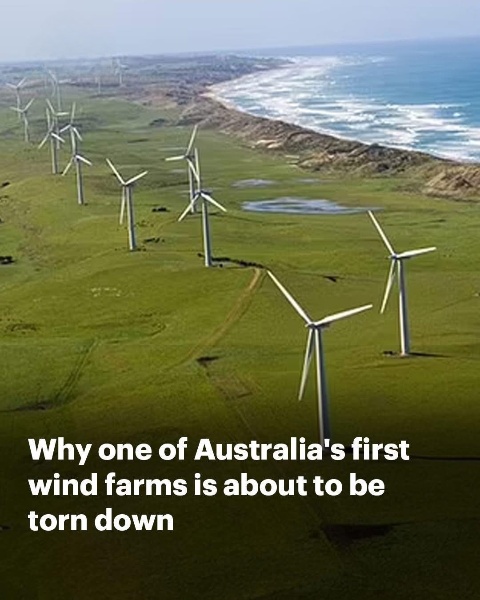One of Australia’s pioneering renewable energy projects is entering its final chapter as the Codrington Wind Farm in southwest Victoria prepares to take down its iconic wind turbines, marking the symbolic end of an era in the country’s clean energy journey. Located on the scenic rolling green hills near Port Fairy, the Codrington Wind Farm holds the distinction of being the nation’s first commercial wind farm.

Operated by Pacific Blue, the site was chosen for its near-perfect conditions for wind energy production and has played a crucial role in demonstrating the viability of large-scale wind power in Australia. Since it first became operational almost 24 years ago, the wind farm has delivered enough clean energy to power 10,000 homes annually, while also helping to prevent the release of nearly 50,000 tonnes of greenhouse gas emissions every year. Its contribution to Australia’s renewable energy landscape has been substantial, not only in terms of energy production but also in shaping public awareness and acceptance of wind power as a practical and environmentally friendly alternative to fossil fuels.
However, after more than two decades of operation, the site’s 14 turbines—each standing approximately 50 meters tall—are nearing the end of their expected lifespan. These turbines represent some of the earliest wind technology used in the region and are now among the first of their kind to require full-scale decommissioning. Rather than taking the easy or more aggressive route of dismantling the turbines with explosives, Pacific Blue has made the decision to carefully disassemble them piece by piece using cranes. This reverse-assembly method mirrors the way the turbines were originally installed and reflects the company’s commitment to sustainability and responsibility throughout the entire lifecycle of its infrastructure. In a statement provided to Renew Economy, a Pacific Blue spokesperson confirmed that all 14 turbines will be removed on-site through crane-assisted dismantling, a process that is not only safer and more environmentally conscious but also more likely to be embraced by local residents.
The dismantling will be performed in the reverse sequence of how the turbines were built—a method requiring precision and patience, but one that aligns with the company’s values and long-term vision for renewable energy stewardship. Pacific Blue has expressed hopes that this project will position the company as a leader in the renewable industry “twice over”—once for being a pioneer in launching one of Australia’s first commercial wind farms, and again for setting a high standard in responsibly retiring renewable infrastructure. The scale of the dismantling project is no small feat. It involves extensive logistical planning, specialized equipment, and a commitment to safety and environmental care.
But despite the challenges, this effort is being viewed as a blueprint for how aging wind farms can be decommissioned without causing disruption or environmental harm. For the surrounding community, many of whom have lived alongside the turbines for decades, the project is both a moment of nostalgia and a testament to the progress of renewable energy in Australia. The turbines have become part of the landscape and a recognizable symbol of clean energy, so their removal will no doubt change the visual character of the region. Yet it also opens the door for what comes next—whether that’s newer, more advanced wind technology or another form of renewable development. As Australia continues its transition to a cleaner energy future, projects like Codrington serve as important reminders that sustainability isn’t just about starting new initiatives—it’s also about responsibly managing the full life cycle of the infrastructure we depend on. The removal of the turbines at Codrington Wind Farm may mark the end of a chapter, but it also represents thoughtful leadership and a mature approach to the evolution of renewable energy in Australia.





